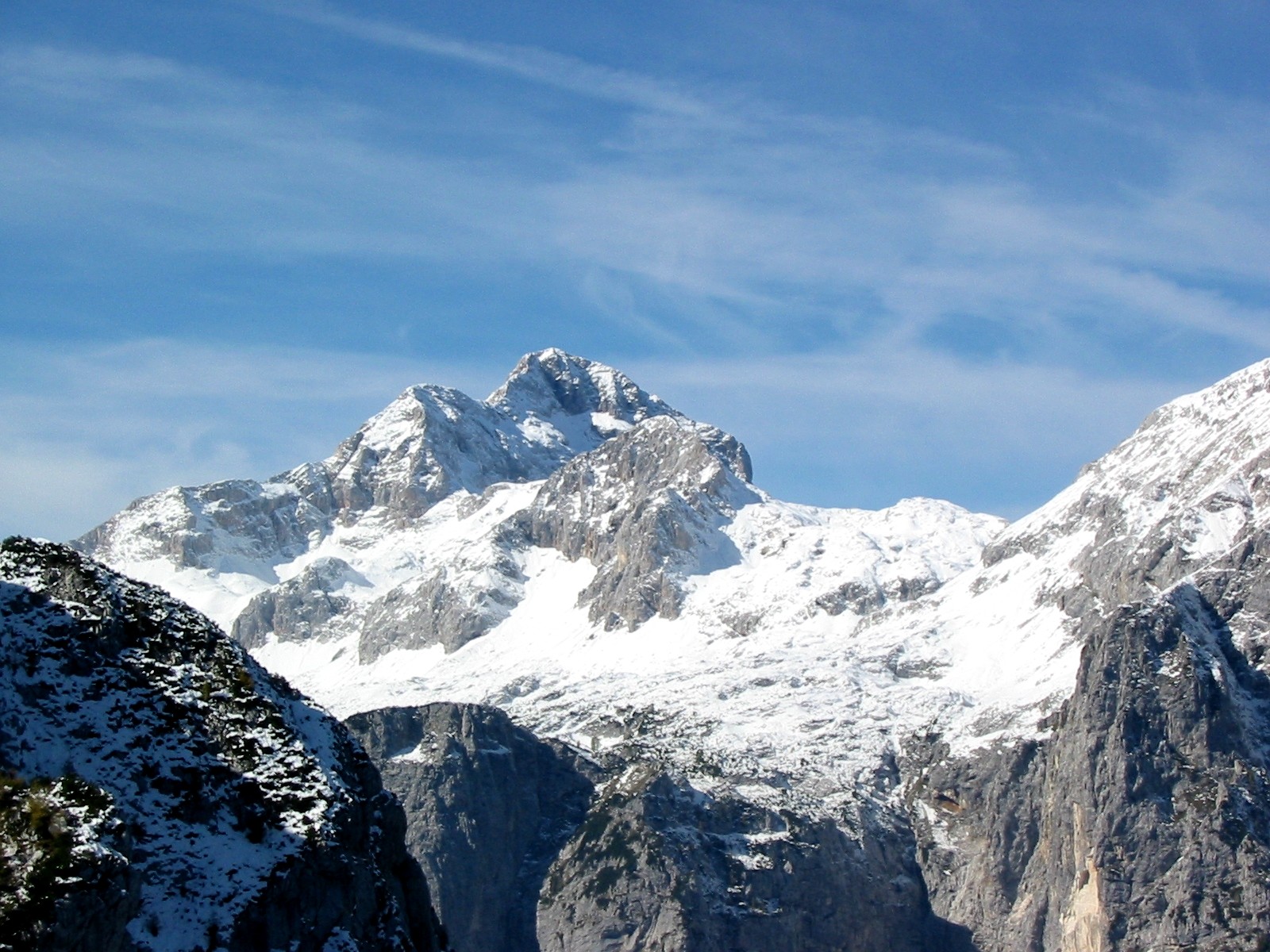|
Svinjak
Mount Svinjak () is a mountain in northwestern Slovenia in the Julian Alps. It stands east-northeast of Bovec Bovec (; , , ) is a town in the Slovene Littoral, Littoral region in northwestern Slovenia, close to the border with Italy. It is the central settlement of the Municipality of Bovec. Geography Bovec is located from the capital Ljubljana, at an e .... The name of the mountain is derived from ''*Svitnjak'' 'shining one' (< ''svit'' 'dawn; light, shining') because it is illuminated by the rising sun when viewed from Bovec. The resemblance to the common noun ''svinjak'' (with various meanings: 'pigsty', 'pig dung'; ' cat's ear') is coincidental. References External links [...More Info...] [...Related Items...] OR: [Wikipedia] [Google] [Baidu] |
Slovenia
Slovenia, officially the Republic of Slovenia, is a country in Central Europe. It borders Italy to the west, Austria to the north, Hungary to the northeast, Croatia to the south and southeast, and a short (46.6 km) coastline within the Adriatic Sea to the southwest, which is part of the Mediterranean Sea. Slovenia is mostly mountainous and forested, covers , and has a population of approximately 2.1 million people. Slovene language, Slovene is the official language. Slovenia has a predominantly temperate continental climate, with the exception of the Slovene Littoral and the Julian Alps. Ljubljana, the capital and List of cities and towns in Slovenia, largest city of Slovenia, is geographically situated near the centre of the country. Other larger urban centers are Maribor, Ptuj, Kranj, Celje, and Koper. Slovenia's territory has been part of many different states: the Byzantine Empire, the Carolingian Empire, the Holy Roman Empire, the Kingdom of Hungary, the Republic of Venice ... [...More Info...] [...Related Items...] OR: [Wikipedia] [Google] [Baidu] |
Julian Alps
The Julian Alps (, , , , ) are a mountain range of the Southern Limestone Alps that stretches from northeastern Italy to Slovenia, where they rise to 2,864 m at Mount Triglav, the highest peak in Slovenia. A large part of the Julian Alps is included in Triglav National Park. The second highest peak of the range, the 2,755 m high Jôf di Montasio, lies in Italy. The Julian Alps cover an estimated 4,400 km2 (of which 1,542 km2 lies in Italy). They are located between the Sava Valley and Canale Valley. They are divided into the Eastern and Western Julian Alps. Name The Julian Alps were known in antiquity as ''Alpes Iuliae'', and also attested as ''Alpes Julianae'' AD 670, ''Alpis Julia'' 734, and ''Alpes Iulias'' in 1090. Like the municipium of ''Forum Julii'' (now Cividale del Friuli) at the foot of the mountains, the range was named after Julius Caesar of the gens Julia, perhaps due to a road built by Julius Caesar and completed by Augustus. Eastern Julian A ... [...More Info...] [...Related Items...] OR: [Wikipedia] [Google] [Baidu] |
Bovec
Bovec (; , , ) is a town in the Slovene Littoral, Littoral region in northwestern Slovenia, close to the border with Italy. It is the central settlement of the Municipality of Bovec. Geography Bovec is located from the capital Ljubljana, at an elevation of . The settlement lies in the Bovec Basin of the upper Soča (''Isonzo'') River, below the eastern slopes of Mount Kanin (mountain), Kanin in the Julian Alps, forming the border with Italy. The adjacent Trenta (valley), Trenta Valley in the northwest leads into Triglav National Park. It has been traditionally part of the historic Goriška region, but today locals prefer to identify with the wider region of the Slovene Littoral. Name Bovec was attested in written sources in 1070 as and (and as in 1181–96, in 1257, and in 1377).Snoj, Marko. 2009. ''Etimološki slovar slovenskih zemljepisnih imen''. Ljubljana: Modrijan and Založba ZRC, pp. 72–73. During the 12th and 13th centuries, the name designated not only the settle ... [...More Info...] [...Related Items...] OR: [Wikipedia] [Google] [Baidu] |
Hypochaeris
''Hypochaeris'' is a genus of plants in the family Asteraceae. Many species are known as cat's ear. These are annual and perennial herbs generally bearing Head (botany), flower heads with yellow ray florets. These plants may resemble or be confused with dandelions and so some are called false dandelions. Estimates of the number of species range from about 50 up to about 100. Most species are native to South America, but some are found in Eurasia and North Africa. Etymology Its name is derived from ancient greek, Greek ''ὑπό'' (under) and ''χοῖρος'' (young pig). Species ; Species References Other sources * * External links * * GBIF entry, with species listJepson Manual TreatmentGRIN Genus Profile Hypochaeris, Asteraceae genera {{Cichorieae-stub ... [...More Info...] [...Related Items...] OR: [Wikipedia] [Google] [Baidu] |
Mountains Of The Slovene Littoral
A mountain is an elevated portion of the Earth's crust, generally with steep sides that show significant exposed bedrock. Although definitions vary, a mountain may differ from a plateau in having a limited summit area, and is usually higher than a hill, typically rising at least above the surrounding land. A few mountains are inselberg, isolated summits, but most occur in mountain ranges. mountain formation, Mountains are formed through tectonic plate, tectonic forces, erosion, or volcanism, which act on time scales of up to tens of millions of years. Once mountain building ceases, mountains are slowly leveled through the action of weathering, through Slump (geology), slumping and other forms of mass wasting, as well as through erosion by rivers and glaciers. High elevations on mountains produce Alpine climate, colder climates than at sea level at similar latitude. These colder climates strongly affect the Montane ecosystems, ecosystems of mountains: different elevations hav ... [...More Info...] [...Related Items...] OR: [Wikipedia] [Google] [Baidu] |

